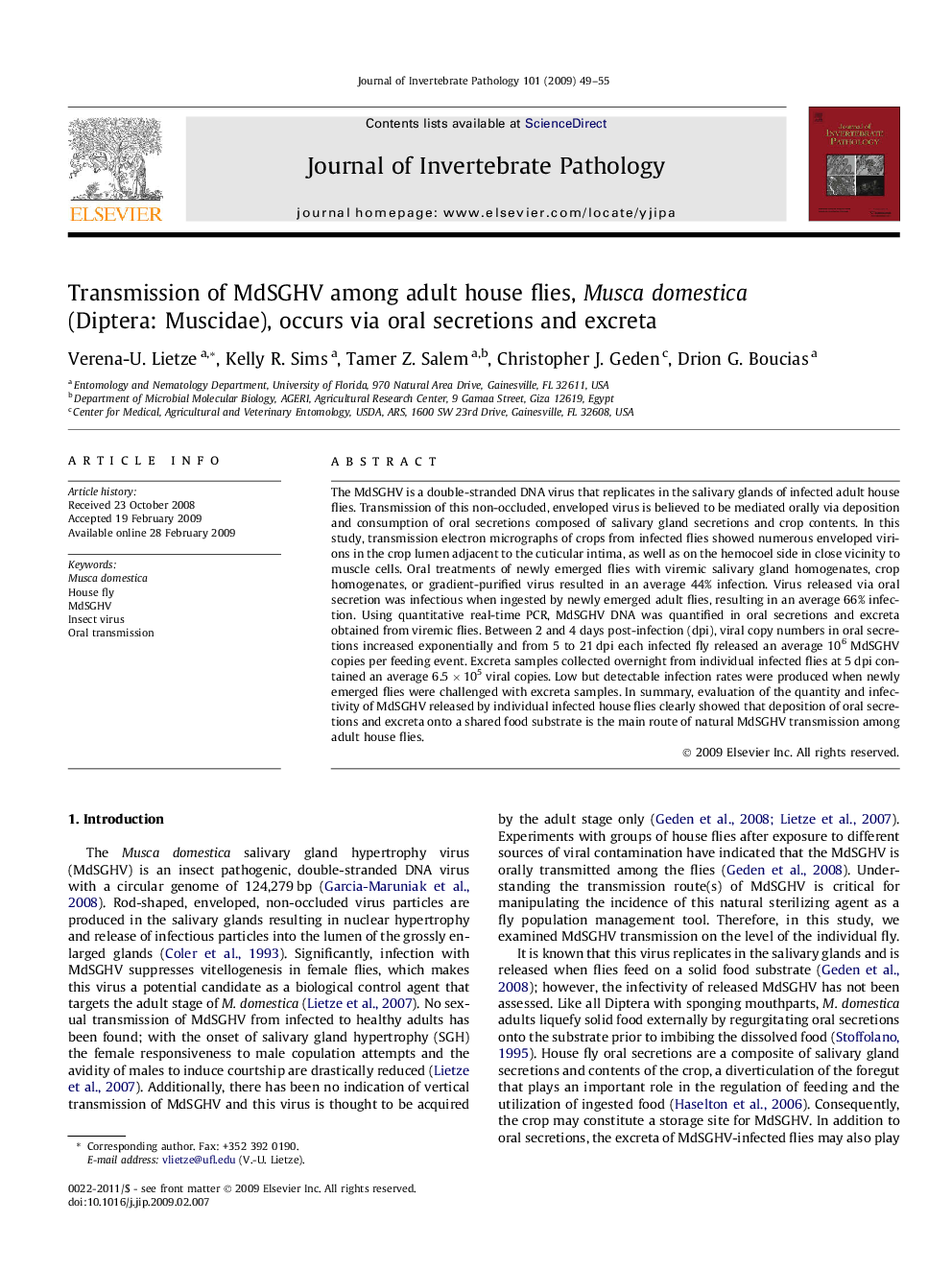| Article ID | Journal | Published Year | Pages | File Type |
|---|---|---|---|---|
| 4558237 | Journal of Invertebrate Pathology | 2009 | 7 Pages |
The MdSGHV is a double-stranded DNA virus that replicates in the salivary glands of infected adult house flies. Transmission of this non-occluded, enveloped virus is believed to be mediated orally via deposition and consumption of oral secretions composed of salivary gland secretions and crop contents. In this study, transmission electron micrographs of crops from infected flies showed numerous enveloped virions in the crop lumen adjacent to the cuticular intima, as well as on the hemocoel side in close vicinity to muscle cells. Oral treatments of newly emerged flies with viremic salivary gland homogenates, crop homogenates, or gradient-purified virus resulted in an average 44% infection. Virus released via oral secretion was infectious when ingested by newly emerged adult flies, resulting in an average 66% infection. Using quantitative real-time PCR, MdSGHV DNA was quantified in oral secretions and excreta obtained from viremic flies. Between 2 and 4 days post-infection (dpi), viral copy numbers in oral secretions increased exponentially and from 5 to 21 dpi each infected fly released an average 106 MdSGHV copies per feeding event. Excreta samples collected overnight from individual infected flies at 5 dpi contained an average 6.5 × 105 viral copies. Low but detectable infection rates were produced when newly emerged flies were challenged with excreta samples. In summary, evaluation of the quantity and infectivity of MdSGHV released by individual infected house flies clearly showed that deposition of oral secretions and excreta onto a shared food substrate is the main route of natural MdSGHV transmission among adult house flies.
